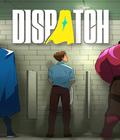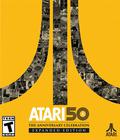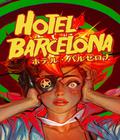
Genre: Fighting
Publisher: Namco Bandai
Developer: Ganbarion
Release Date: August 29, 2006
 Following the success of One Piece: Grand Battle in both North America and Japan, Namco Bandai decided to publish a North American-only release of the single-player-heavy sequel, One Piece: Grand Adventure. While a true sequel to Grand Battle has already been released in Japan, this new take on One Piece involves an adventure mode that adds an abundance of gameplay hours.
Following the success of One Piece: Grand Battle in both North America and Japan, Namco Bandai decided to publish a North American-only release of the single-player-heavy sequel, One Piece: Grand Adventure. While a true sequel to Grand Battle has already been released in Japan, this new take on One Piece involves an adventure mode that adds an abundance of gameplay hours.
While it may be marketed as an adventure game this go-round, at its core, One Piece: Grand Adventure is a very unique fighter. The arenas are set up very similar to Power Stone in that you can run around wherever you please. The X and Circle buttons do forward and air attacks respectively, and when pressed at the same time, they do a strong attack. Square grabs, Triangle jumps, and R1 or R2 guards; pretty basic combat so far. It's not until you explore the realm of L1 that you get into the crazy stuff.
Once you hold L1, you can perform one of four moves, all of which use up your Skill Gauge. First of all, you can activate a character's Super Attack. This is similar to many fighting games that have supers in that you get a cool animation and a bunch of damage. Next, you can perform Accel-Heat, which cancels your current attack and allows you to more easily string together combos. Another option, Support Attack, summons a support character to help you out. Depending on which type of support character you choose at the beginning of the match, this move can really turn the tides of battle and truly adds to the uniqueness of this game.
Last, and most certainly not least, is the Secret Attack. This attack uses all three levels of your Skill Gauge and performs a very powerful attack. However, in order for it to be executed, you must play an impromptu game of rock, paper, scissors with your opponent using Triangle, Square, and Circle. Each button has precedence over another button, but of course, you won't know if your awesome attack hits until this little guessing game is complete. This is intended to be a party game and has been done before in games like Dragonball Z: Budokai, so it's not that big of a complaint.
To add to the Power Stone feel, there is also the inclusion of items and power-ups during battle. These items can range from bombs and bats to even stranger weapons like beehives and gold nuggets, while the power-ups raise health, strength, defense, and speed. All of this only adds to the fun and chaos of each match.
However, the combat is not flawless. Because most of the stronger attacks are performed by pressing the same button repeatedly, it becomes classified as a button-masher. Now, of course, this is easily refuted once you discover how to do the more complex attacks, but it can't be denied that pressing X, X, X is pretty effective for most characters. Also, with some of those attacks, if your character begins the chain and misses, he is left flailing in the corner while your opponents get the upper hand and the clock ticks down.
The biggest complaint has to be the lag. If you get enough action going on with support characters and projectiles and items, the game starts to noticeably slow down. This can become a drag when it happens in nearly every battle. Nevertheless, the combat is still fun for everyone, especially fans of the series.
The main mode in this game is, of course, Grand Adventure. In this mode, you start out as One Piece's main character, Monkey D. Luffy, as he travels the sea striving to become the king of the pirates. The game is laid out with a map of the sea, and you navigate your ship by selecting various challenges on different islands. Most of these are regular versus battles with certain conditions, like the opponent being faster or having higher defense. However, the maps are also full of challenges called rumble battles, which are packed with support characters that you must defeat before time runs out. Lastly, there are the off-the-wall mini-games sprinkled throughout, which include breaking boxes or racing a duck.
After each challenge, you earn experience points to develop your characters. This really adds to the personalization of the game, since you can take your memory card to a friend's house and upload your leveled characters for versus mode. If you choose to only level up one character, later in the story you will have only one character to fight with because the rest will be basically useless.
Almost all of these challenges also have bonus conditions, which, if fulfilled, reward you with loot to raise your stats or new playable characters. Many of these bonuses unlock characters for use in versus mode, so in order to earn everything and get 100% on each story mode, you must fulfill all of the bonus conditions.
In addition, while you start out with only the Monkey D. Luffy storyline, there are five total storylines to play through. Luffy's storyline is pretty short and can be completed around four to five hours, but with each story you unlock, the adventure gets exponentially more difficult.
Aside from Grand Adventure mode, you can also choose Grand Battle, which includes Versus, Arena, Tournament, and the obligatory Training mode. In Versus, you can choose between the regular character or the leveled-up version obtained in your story mode. Additionally, the Tournament option allows you to set up a bracket with up to eight players.
Also included in Grand Battle is Arena, which lets you battle through ranked characters in order to try and earn the highest ranking. In this mode, you earn a collectable card after each match, of which there are 300 total to collect. Finally, you have the Special Games, which are all of the mini-games played in story mode, most of which can be replayed as two-player games.
Surprisingly, the amount of detail apparent in the show is retained through the game with the in-depth, cel-shaded characters. Also, fans will be happy to note that all of the original voice actors lend their talents to Grand Adventure. Unfortunately, voiced dialogue is rare throughout (except for those laughs and grunts), but it is definitely quality when it does appear.
Despite its minor flaws, One Piece: Grand Adventure is a great example of what an animé fighter should be. It includes an incredible amount of fighters from the series, and with all of the unlockables and story modes to complete, the replay value simply shoots through the roof. Newcomers and fans alike will find something to enjoy in Grand Adventure.
Score: 8.0/10



























































